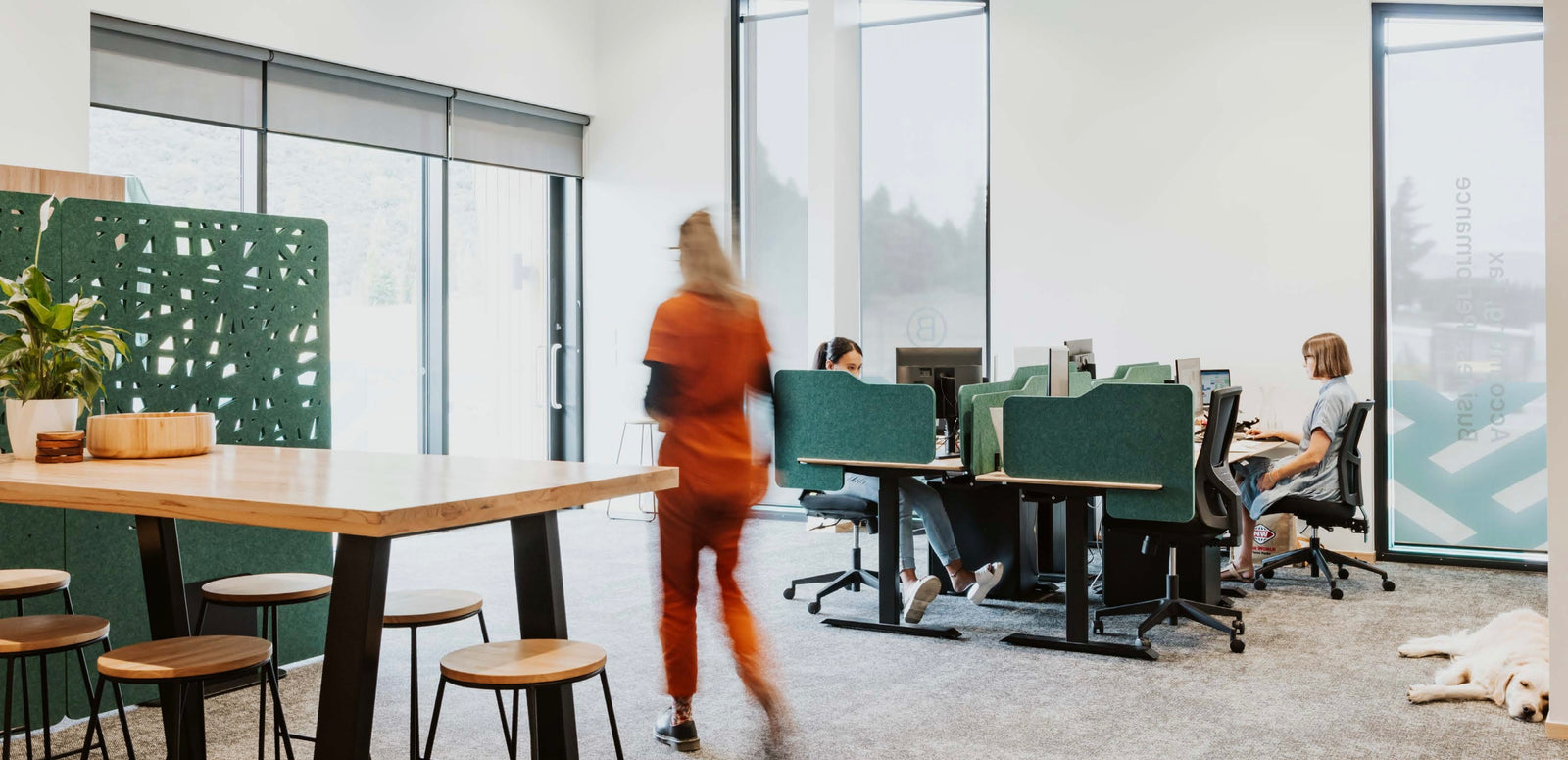
Mark Redshaw |
What are Acoustic Panels made of?
Acoustic panels are made from compressed polyester fibre with at least 70% recycled content. Each panel is a solid colour with no pattern repeat, the panels have a slight directional grain. Just remember, the colour may vary between panels and samples, because of how the panels are made.
What size options are there?
The standard panel size size (mm) is 2440 x 1220 x 12, and are available for immediate dispatch.
The 2440 x 1220 x 24 panels are made to order, with a lead time of 10-12 working days.
The standard panels can be cut to smaller sizes or different shapes. You have the option to cut the acoustic panels yourself, using a sharp knife / craft knife or you have the option to pay for the panels to be cut for you by our suppliers at an additional cost.
What does NRC mean?
The Noise Reduction Coefficient (NRC). Imagine a sponge absorbing water, the NRC measures how well a sound product can absorb sound in the same way.
The NRC is scored from 0 to 1. A product with an NRC of 0 doesn't absorb any sound.
NRC ratings for some of the Acoustic Panels we sell are below:
2440 H x 1220 W x 12D = NRC of 0.4 can absorb about 40% of sound
2440 H x 1220 W x 24D = NRC of 0.8 can absorb about 80% of sound
What is the best NRC range for a particular room?
Different rooms require different solutions, the recommended NRC ranges for different rooms are:
Meeting rooms = 0.6 - 0.8
Open plan office = 0.6 - 0.8
Restaurant / Cafe = 0.7 - 1.1 (Range dependant on the atmosphere/environment you are creating)
Church = 1.3 - 2.2
How many panels do I need?
Finding the right balance between cost and the NRC effectiveness can be a challenge when it comes to acoustic solutions. More panels can lead to better sound reduction, but it can also increase the cost. If you want a cost-effective approach without having to hire an acoustic engineer, we can help.
An option is to establish what NRC rating the existing room has. We suggest using the Clap IR, a free app available on the iTunes store.
. https://apps.apple.com/nz/app/clapir-acoustics-measurement/id521153051
Once the NRC rating has been worked out, the types of acoustic panels and quantities best suited for that room can be decided on.
What are other ways to reduce noise besides Acoustic Panels?
Furniture and soft furnishings can be used to help reduce the noise.
Sofas, chairs, cushions, rugs, and drapes are all options that can help lessen the echo in a room.
Do Acoustic Panels reduce bass? Will they reduce noise from outside or adjoining rooms?
No, Acoustic Panels will not reduce bass, they are most effective at reducing noise at higher frequencies.
Acoustic Panels will only reduce noise within a room.
What is frequency?
The number of times the sound wave repeats itself in one second is called frequency, measured in Hertz (Hz). Frequency is effectively pitch, so a high frequency wave will be heard as a high pitch sound, and a low frequency wave a low pitch sound.
In an office environment sound sources fall into different frequency ranges, for example:
- Low frequency = 50 – 250 Hz. Sounds within this range are primarily produced by heating, ventilation, and air conditioning (HVAC) systems, but they can also come from deeper aspects of speech, such as vowel sounds.
- Mid frequency = 250 – 2500 Hz. This is typically the range that human speech exists
- High frequency = 2500 – 12000 Hz. Ringtones, whistles, and elements of speech such as syllables exist within this range
A 12mm panel has a significant reduction on frequencies of 1000hz and above.
| Freq (HZ) | NRC |
| 250 (low) | 0.10 |
| 500 (mid) | 0.25 |
| 1000 (mid) | 0.55 |
| 2000 (mid) | 0.75 |
| 4000 (high) |
0.95 |
How do I fix acoustic panels to wall?
There are several options to attach Acoustic Panels to a wall, please note that each option mentioned below will leave some mark or damage to the wall.
Acoustic Panels can be easily screwed to a wall. Wall dog screws work well.
Using generous amounts of a heavy duty double sided tape will hold the panels securely in place. Product recommendation: 3M Scotch Mount, double-sided outdoor tape
Spray Adhesive also works well, leaving a clean professional look. X40 Tensor grip green from Gift Edge is a premier adhesive for Acoustic Panel bonding applications.
What if Acoustic Panels cannot be attached to the wall?
Sound normally travels upwards first, so Ceiling Acoustic Panels can be a very effective option in reducing echo.
You can also put acoustic panels under tables to catch sound bouncing off the floor, this is particularly useful if you have concrete floors.
Acoustic Freestanding Partitions are an excellent alternative.
What is the fire rating for acoustic panels?
The (12mm) have been tested according to AS ISO 9705-2003 (R2016). They have been assigned a Group 1 classification, which is the highest.
Do you ship anywhere in New Zealand?
Freight is included to all main towns and centres in the North and South islands. The main exclusions are any smaller islands or isolated rural areas.
Do you install acoustic panels?
Yes. We have installers based in all main centres throughout New Zealand. If you have any questions then feel free to get in touch and we can discuss installation options with you.
